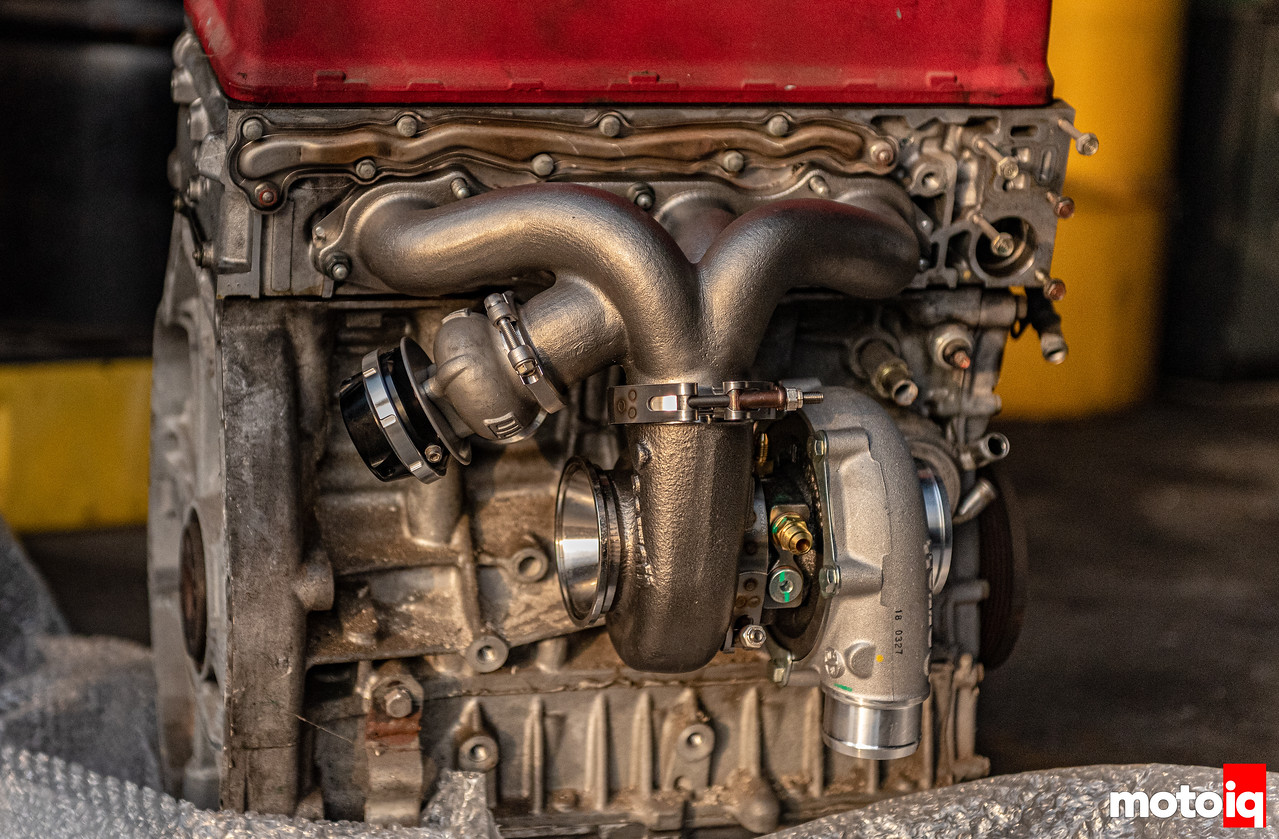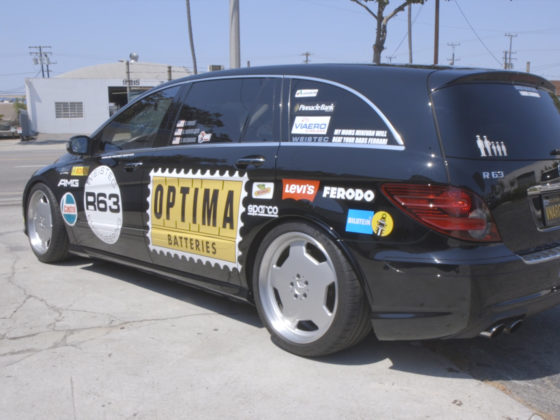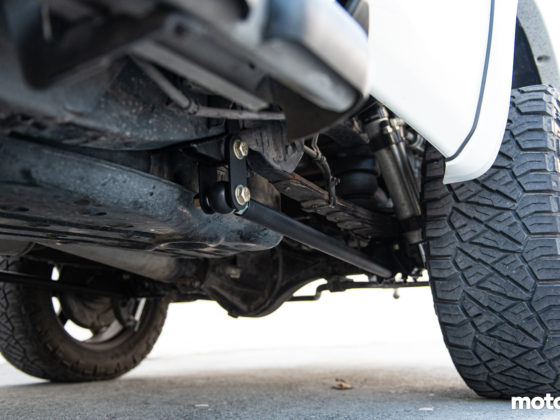It’s been a long journey, but the most important piece of the Project S2000 AP2 turbo build is finally here. The original plan was to 3d print from Inconel 625 with a thin-wall design. At high temperatures where exhaust manifolds operate on turbocharged cars, 900degC plus, Inconel is twice as strong as stainless steel; so, you can go much thinner on the wall and save weight.
After discussing with a supplier, the cost of doing our design by 3d printing straight from Inconel would have been too cost prohibitive. The design required a ton of support material which drove up the cost of post processing the removal of the support material. Therefore, I changed the design to be investment cast. I also decided to change the material from Inconel 625 to 347SS. 347SS has better creep and stress rupture properties than typical 304L at higher temperatures. Just in case I messed something up with the design, 347SS is easier to modify and rework than Inconel.
The other part of getting a part made is to find someone to actually make it. Out of four suppliers, two were too busy. It takes as much engineering resources to make one part as it takes to make a million, so finding someone to take on a one-off project like this wasn’t easy. Out of the remaining two suppliers, one quoted three times higher than the other. You can probably guess which one I chose. Invest Cast Inc. based out of Minnesota took on the job. For a part like this, suppliers require models of the casting and the final machined geometry along with drawings for both.

I changed up the design a bit after the initial test fit of the first design, shifting the turbine inlet flange to be in the middle of the cylinders as opposed to offset towards cylinder #3. With the material change to 347SS, I changed the runner wall thickness to 4.5mm nominal thickness. For reference, Schedule 40 pipe in the 1.5” to 2” size is around 0.14-0.15” wall thickness, or about 3.5-3.8mm.

A key design detail is using a sizeable fillet radius to reduce stress concentrations. I used 5mm radius fillets everywhere on the manifold. Using too small of a radius will lead to high stress concentrations and cracking with thermal cycling.

I designed the two v-band flanges to match the Garrett G25-660 turbine inlet flange and the Turbosmart Comp Gate 40 wastegate flange. Weld joints create a Heat Affected Zone (HAZ) which can create weakness in the material. With the v-band flanges machined straight from the casting, just like turbine housings, there’s no welding to create weakness.

The wastegate port location and angle is not what I call ideal, but it’s what I could get taking into account clearances between the v-bands and leaving machining tool access to machine the v-bands. I did design the diameter of the wastegate runner at the merge to be about 4mm larger than at the wastegate flange to try to get a bit more wastegate flow. You can just see how the wastegate runner narrows down to a smaller diameter just before the wastegate flange. Hopefully, the wastegate flow will be good enough to control the boost to 15psi which is our target.

There are a couple reasons why the ports are off relative to the bolt holes. First, when you start machining a part, you have to pick a starting point and also decide what the Key Control Characteristics (KCC) of the part are. I decided the turbine inlet flange was the KCC because it locates the turbo relative to the engine. Plus, I wanted the turbo turbine inlet placed precisely with the outlet of the manifold. So, the turbine inlet flange was machined first relative to the cast port of the manifold. Then the head flange was machined and the bolt holes to accurately locate the turbine inlet flange to the engine head. A quick note on the holes in the flange for mounting to the head. A couple are tighter 8.65mm diameter to more accurately locate the manifold while the rest of the holes are larger 9.15mm diameter to allow for tolerance stack-up.




22 comments
It’s good to finally see the finished casting! Thanks for showing the small changes as you went forward with the design iterations- getting all those critical measurements to line up all at once is a pain.
Can’t wait to see/feel it in person. 😉
Oh man, I’ve been waiting for this article, and even harassed you a bit on instagram when you posted a teaser. Over the last few years I’ve been getting really into 3D scanning and 3D printing to augment my solidworks design workflow, and its crazy how far the technology has progressed. I’ve really enjoyed both parts of this turbo design and seeing your process Its too bad that there isn’t a low cost support option for the metal 3D printing. I guess either way you’d still have to remove all of the supports and smooth it all out.
My company was also recently approached by a company that offers a 3D printer that can print sand cast molds, and though of how useful it could be for small projects like this.
Check out this video from Papadakis Racing where they just did a 3d printed Inconel manifold. At 6:56, you can see them knocking out the support material. The whole video on how they did the manifold design is a better version of how I did it. Our buddy Tyler is the guy doing the 3D scanning in the video. I wish I would have had a full scanner like that and scan the whole engine bay. Better than working off of pictures and tape measure and caliper measurements. It basically saves one iteration.
https://youtu.be/4jbn0ah3u9E?t=415
Just looked at the Papadaski printed manifold, don’t understand why that are not looking at the rx and circuit racing manifolds, those cars run for years this. We run it on our car with grate success but the design of assbly is way different. Also it’s just stupid to leave out the free air injection from the design,it’s a turbó engine,in the 80s engineers knew it’s a must.
ok so I mostly don’t know what I’m talking about on the subject… but don’t you want cuts on the flange between the runners so the manifold has space to expand and contract with temp changes?
On a 4-cylinder, typically the manifold is short enough. On an inline-6 though, it’ll be often split 3 and 3. Also check out the manifold from the BMW B58 engine where they stick bellows joints between the runners on their log manifolds to prevent cracking. On long log manifolds, there needs to be some type of bellows or slip joint. On tubular, the tubes can bend a bit like a paperclip. Another reason for the larger 9.15mm bolt holes in the flange are to allow for some of that expansion/contraction.
Is this going to be available to buy?
I have the one extra and that’s it. If you’re interested, hit us up; it’s not going to be cheap though. I want to get my car running first to see how it does before selling the spare so I can make sure the buyer knows what goes into fitment and also the boost performance.
How much would it cost to produce another one of these manifolds? I would be interested as well. I know you said it was not cheap but if the process has already been proven… God bless.
Thanks again.
After I test out the performance and the minimum level of boost it can run, I may consider having a handful made if there is enough interesting. I expect to have everything up and running by summer. If I can get the piece price down below $3k and enough people signed up, we could do it.
How do I get on the list for this manifold? Idk why it has taken so long for someone to make a high-performance cast manifold for the s2k.
Would you mind sharing the cost of the casting? I’m looking to make something similar for a k20.
Hit up Invest Cast. It’s hard to say as it depends on shape and raw material costs at the time.
How much did this one cost you? Or would it have if you paid retail for it?
I paid a LOT for it. One-off prototypes are not cheap. The manifold by itself cost almost as much as a Full-Race or SOS TSMAX turbo kit. This included the casting, heat treatment, and machining of the manifold. And keep in mind, the quote I got for the casting from Invest Cast was 3x cheaper than the other supplier!
Send us your .stl, parasolid, or most any 3D model for review. Typical time for a quote is less than one day.
There is so much hardcore geeking out going on here, I love it.
I had to look it up in your past articles, but you should also have linked those for reference as to how you got to this point. It was a good re-read for me.
Thanks for the feedback! I typically do link, but just didn’t this time. I went back and added a iink to Part 25 when this whole hairbrained idea started almost 3 years ago!
I think it’s a super cool project and I love spending money but I just don’t get the aversion to just welding one up out of tube unless the only goal was to fool CA smog techs. Just seems like a huge expense for something like this, then you go and cover it up with a heat shield?
Doing it as a casting gives a lot more design freedoms. Like I was able to do a pretty gentle transition from the oval head port geometry to circular runner to minimize flow separation. And I was able to make the merge quite compact. The runners are all splines in shape instead of constant radius bends, so that gives some more freedoms with infinitely different radii. In hindsight, I could have made the wastegate runner port even bigger than the 4mm I did over the WG flange. Also, every weld joint is a potential failure point. I probably could have designed it as a fabricated manifold and it probably would have cost as much being a one-off as jigs would have had to be built, all the cut sections required, the merge would have been a pain in the ass to fab, etc. The reason for keeping the stock heat shield is thermal management to improve reliability.
I would love to see a youtube video about this and future updates to the s2k! especially with Mike Kojima as the host!
Hi Khiem,
I’m looking to buy manifold.
Also sent you message on Linkedin.
I can’t find where to get manifold to my s2k with g25-660.